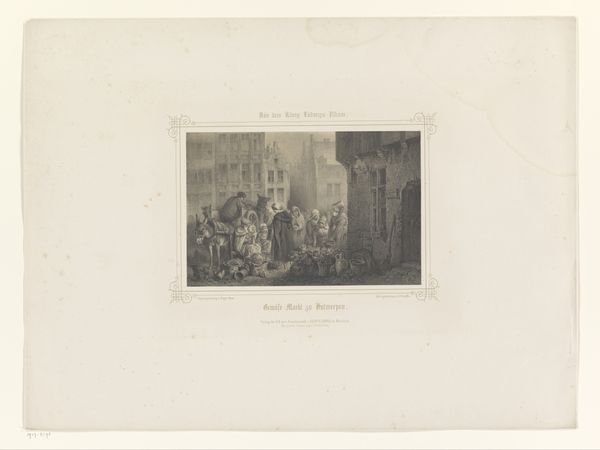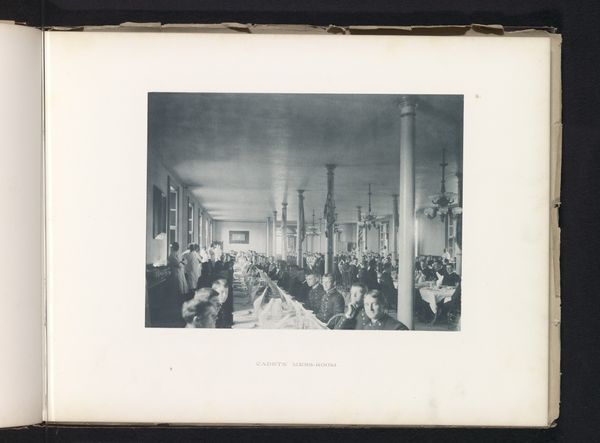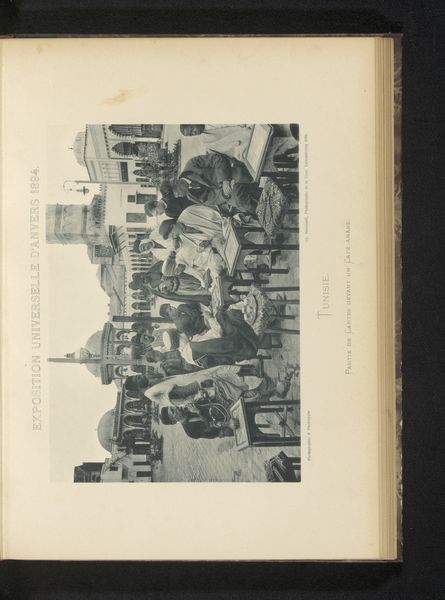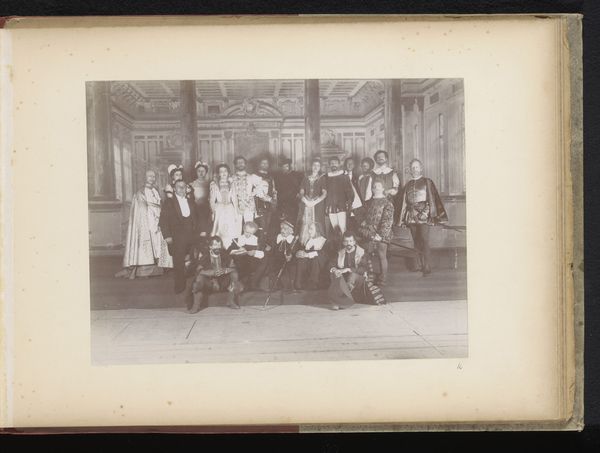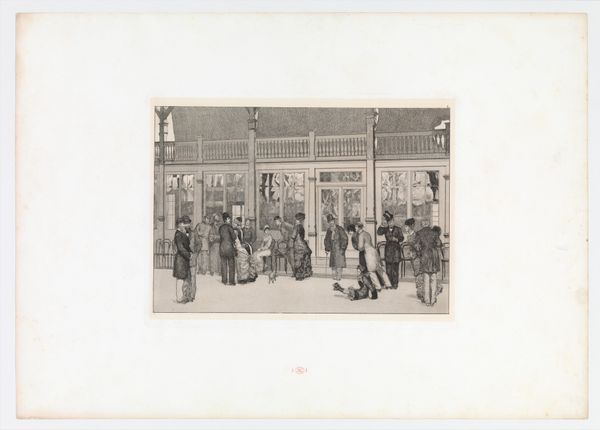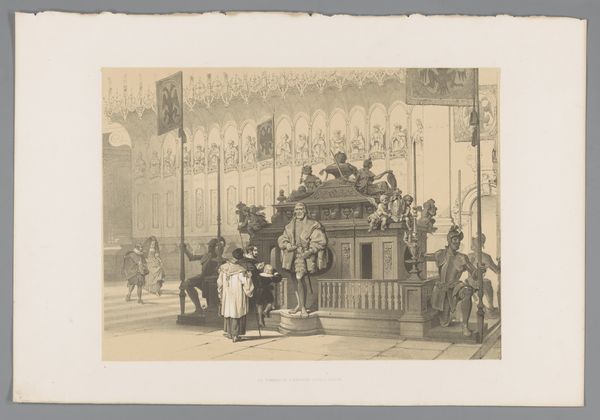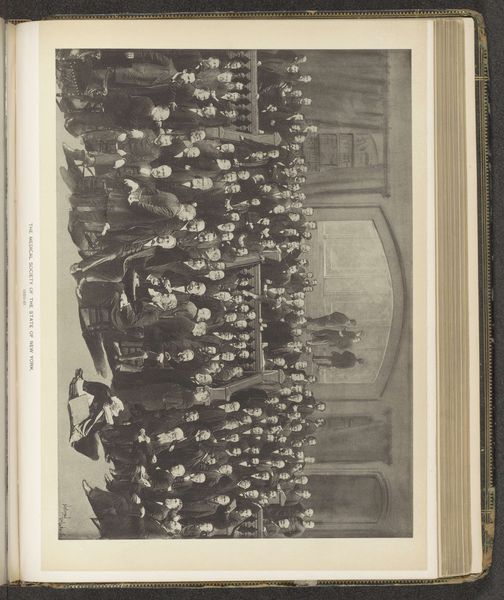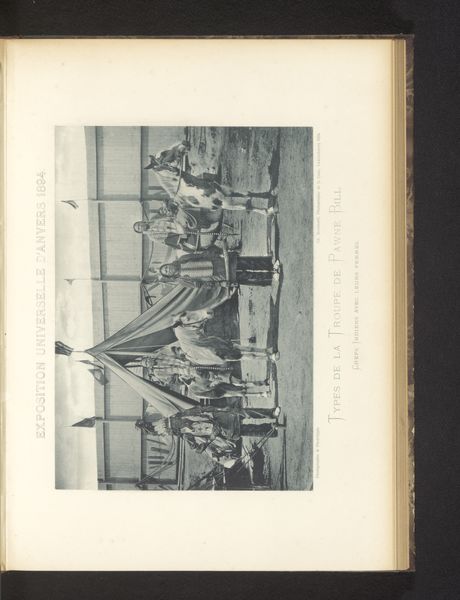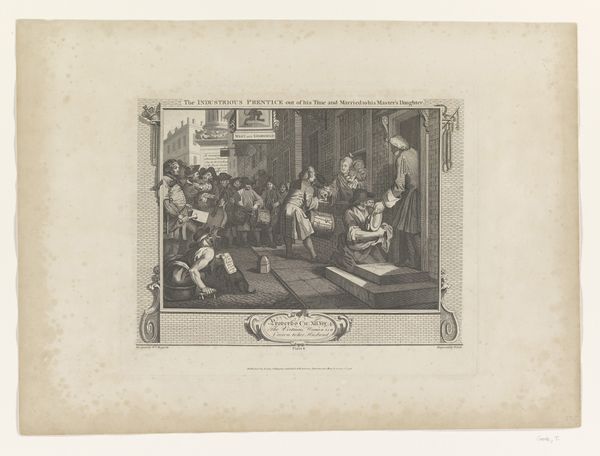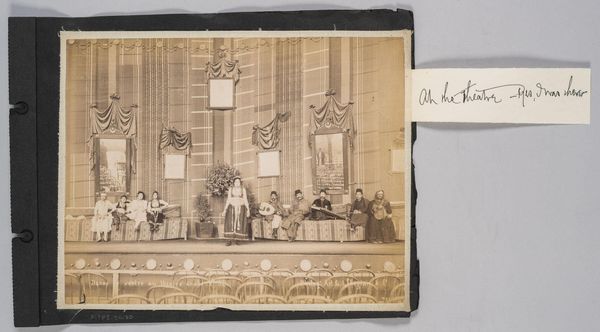
Groepsportret van de commissie en werknemers van het Russische deel van de Wereldtentoonstelling van 1885 in Antwerpen before 1885
0:00
0:00
print, photography, gelatin-silver-print
#
portrait
#
ink paper printed
# print
#
white palette
#
photography
#
group-portraits
#
gelatin-silver-print
#
genre-painting
#
modernism
Dimensions: height 280 mm, width 210 mm
Copyright: Rijks Museum: Open Domain
Editor: So, this photograph, a gelatin silver print, captures a group portrait of the commission and employees of the Russian delegation at the World Exhibition in Antwerp, sometime before 1885. There’s almost a solemn formality to the arrangement; it feels very posed and deliberate. What draws your eye, initially? Curator: The backdrop itself speaks volumes. Note the eagles, the intricate circular designs above the figures… They’re not mere decoration; they broadcast imperial power, an idealized version of Russian identity projected onto a world stage. How do you think that imagery played into the overall impression Russia wished to convey at the exhibition? Editor: I hadn't considered it as a deliberate projection, more like…period decor. But thinking of the eagle as a symbol of power, its repetition does feel very intentional. Does that connect to why they chose to represent themselves in a photograph rather than, say, a painting? Curator: Precisely! Photography, at this time, was seen as a tool of documentation, of capturing 'reality.' This photograph claims authenticity, a factual representation of Russia’s presence and influence. What's fascinating is how carefully that "reality" is constructed. It's not just about showing up; it's about crafting a visual narrative. What are they communicating about Russian identity? Editor: Maybe that Russia is a power to be reckoned with, organized, and self-assured? This reading transforms how I look at not just the picture, but also World Exhibitions themselves. Thanks for illuminating the symbolic language within the piece! Curator: Absolutely! Remember that even seemingly straightforward images are layered with meaning, shaped by the cultural and political currents of their time. This exploration of symbols is essential to understand historical narratives.
Comments
No comments
Be the first to comment and join the conversation on the ultimate creative platform.
